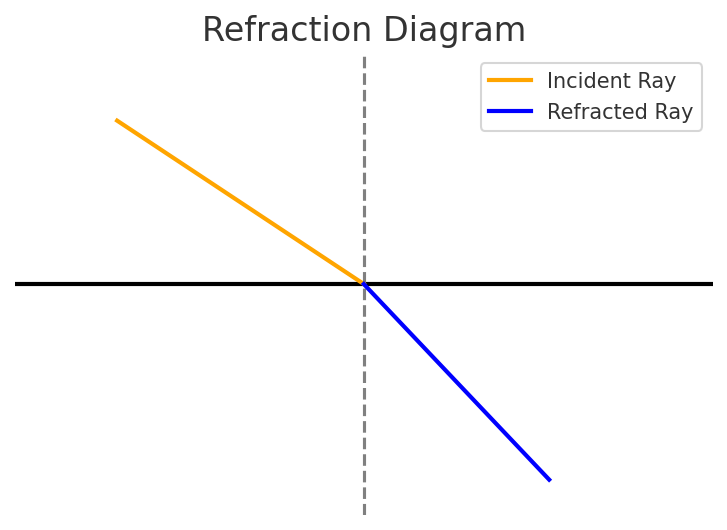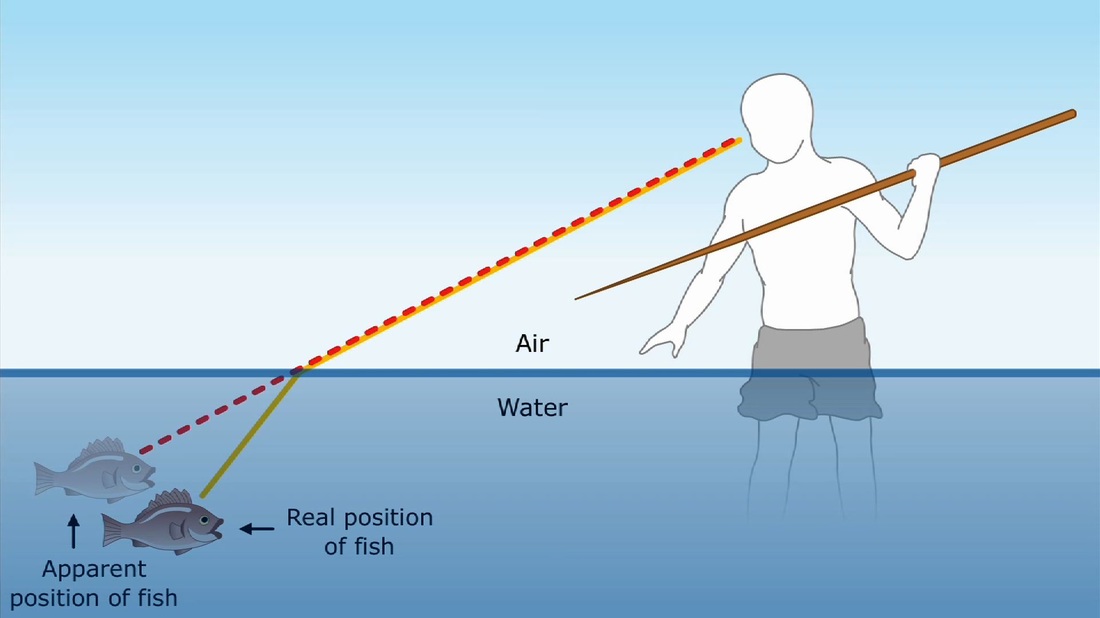Refraction
What is Refraction?
Refraction is the bending of light towards the normal (a line perpendicular to the medium's surface) when it moves from one medium to another - e.g., from air into water or from glass to air. This bending happens because light travels at different speeds in different materials
Why does light bend?
Imagine that a car drives from a smooth road onto a sandy road at an angle. The wheel entering the sand first would slow down first, but the rest would continue at the same speed. This would make the car turn slightly. Light is similar: when part of a light wave enters a denser medium (e.g. water), it slows and so the ray as a whole bends (refracts).

2 key terms
Incident ray: The incoming ray of light that hits the boundary between 2 different materials. It approaches the surface of the material at an angle to its normal (the line perpendicular to the surface)
Refracted ray: The ray that continues into the second medium (material), but bends due to refraction.

How can we use this in real life?
If you see a fish underwater, the image (what your eyes see) is different to the actual position of the fish. This is because light rays refract as they travel from water to the air. However, our brains think that light always travels in straight lines. This makes it seem like the fish are nearer to the surface and closer to you then they really are.
Spear fisherman use this knowledge and aim slightly below the image of the fish or at its tail/head (this means the body of the fish is hit).
Look at the diagram below that shows this concept:

An interactive demo to show the relationship of the incident and refracted ray
n₁ sin(θ₁) = n₂ sin(θ₂) ⇒ θ₂ = 0.00°